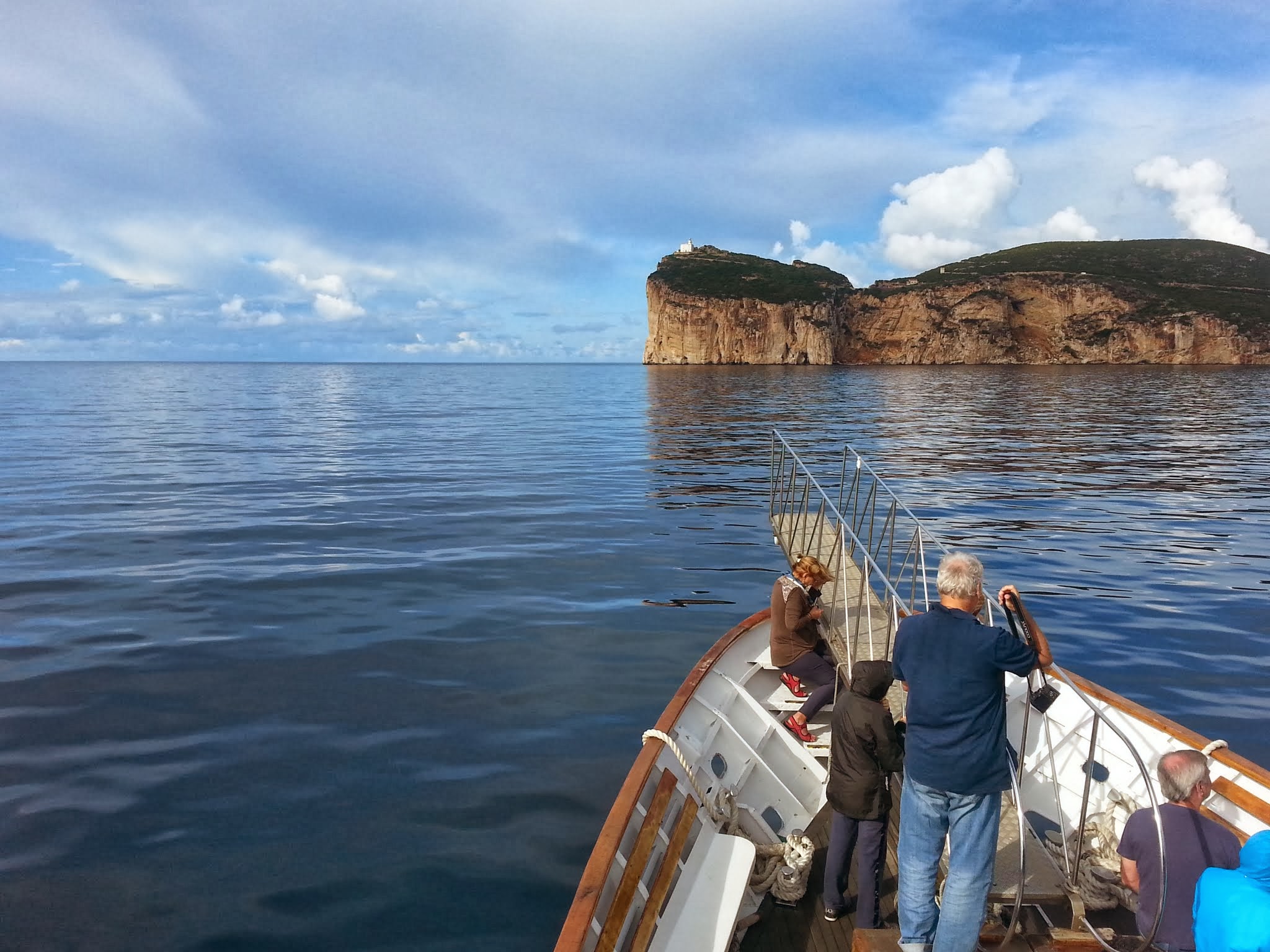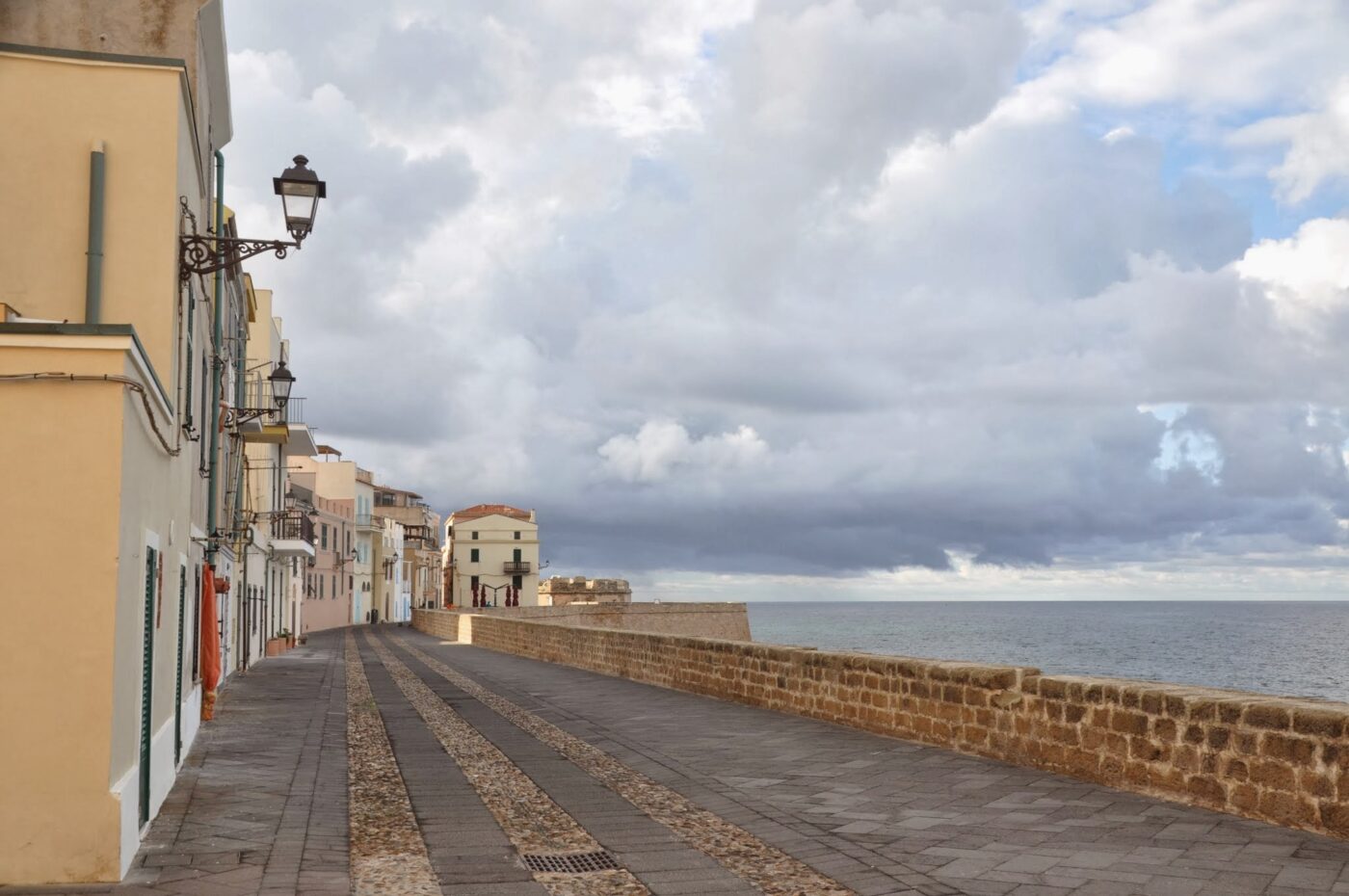A scenic Sardinian city with a strong Catalan influence, Alghero has been subject to Spanish colonization for a long time whose signs remain everywhere: in architecture, city traditions, typical cuisine and especially in the local language. The name of the city probably derives from the abundance of Posidonia oceanica leaves, called alga, which in the past, like today, were deposited along the sandy shores following the storms.
The architecture of the city, strongly characterized in its Catalan style, makes it a destination of great interest for the visitor who is looking for a sense of refinement and details in the buildings. The historic center, included the ancient city centre and the walls remain intact; the walls were built by the Doria family in the 12th century, subsequently strengthened by the Spanish in the 14th century. With its mighty towers, ramparts and the peculiar low and narrow tuff houses facing the sea, Portal de la Mar (the gateway to the sea) is one of the most beautiful historical entrances of the city walls. The historic center is also marked by beautiful buildings such as the Cathedral of Santa Maria, the church of San Michele and Casa Manno, a research center hosting a rich collection of paintings, books and manuscripts.

The city represents one of the access gates to the island, thanks to the Fertilia airport and it is considered the capital of the Riviera del Corallo, a name that derives from the fact that the waters of this area are rich in precious red coral which through delicate processing it is then sold by local artisans in the form of jewelery and other objects. In fact, crafts, together with tourism, represent the main engine of the city’s economy; for these reasons there is also a museum is dedicated to coral that reveals its history and shapes.
The best known beach in the city is Le Bombarde, a destination for families with children, young people and water sports enthusiasts. A short distance away there is also the Lazzaretto, an expanse beach characterized by light and thin sand. Other amazing Alghero beaches are Mugoni beach and Maria Pia beach. In the city there is also the marine protected area of Capo Caccia – Isola Piana, with beautiful naturalistic treasures such as the cave of Neptune, reachable by land thanks to the Escala del Cabirol, and by the sea with the boats that leave from the marina. Porto Conte park also belongs to the Capo Caccia marine area and it is a unique environmental heritage in which a great variety of local fauna and flora lives. But Alghero is not only sea, in fact in the municipality of Alghero it is also possible to visit important archaeological sites such as the necropolis of Anghelu Ruju where there are also the domus de janas of Santu Pedru and the nuragic complexes of the nuraghe Palmavera and Sant’imbenia.


Among the city events, the best known is the Cap d’Any de l’Alguer, the New Year’s party that animates the center with dances, music and shows. Another very important and suggestive anniversary is the Holy Week, the celebration of spanish Easter which consists on a procession with the statue of Christ that follows retraces moments of pain in the life of Christ such as the celebration of the Via Crucis, rite of the descent of Christ from the cross and his cradle deposition. Other important events are the launching of the coral for the Holy Christ and the commemorations related to San Francesco and Sant’Anna.The local gastronomy is mainly based on fish and shellfish. The best known and appreciated dish is the famous Catalan lobster, prepared with a lemon vinaigrette, onions, oil, mustard and vinegar. Other pleasing dishes are the baked salted escargots called monzette, the Alghero paella and the desserts such as burnt cream and menjar blanc. As for wines, there are many included those produced by the Sella & Mosca estate, where you can also visit the cellars and the eco-museum inside.